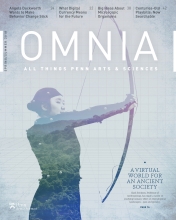Last December, President Donald Trump issued an executive order shrinking the Bears Ears National Monument in southeastern Utah by about 85 percent. The order stripped protections from numerous archaeologically, religiously, and ecologically valuable sites and artifacts within the 1.35 million acres of the original monument, which had been established by former President Barack Obama a year earlier. It also cut the ground out from under one of the most promising experiments in public lands protection in recent U.S. history.
Examining the troubled history of public lands in the U.S. makes it clear why the fight over Bears Ears matters. When Americans first entertained the idea of permanently retaining large swaths of land in federal possession in the late 19th century, they assumed those lands would be administered in the public interest. Even as the system diversified to include national parks, forests, seashores, monuments, wildlife reserves, and wilderness areas, the idea that it served “the public” remained its guiding light.
But the public nature of the public lands often proved more aspirational than real. Federal land managers repeatedly made decisions that benefited only narrow segments of the American people. On lands designated for extractive uses such as forestry, grazing, and mining, for example, they fought valiantly to prevent the worst abuses. But they often found it easier to forge alliances with large ranchers and mining and timber companies than with subsistence users or small-scale commercial operations.
Similarly, on public lands devoted to non-extractive uses, such as national parks, monuments, and wilderness areas, certain parts of the public consistently benefited more than others. In particular, administrators focused on the white middle- and upper-class tourists they assumed were most likely to appreciate and respect such areas’ aesthetic and scientific marvels. Despite efforts since the 1990s to make public lands more welcoming to minority and working-class visitors, they continue to be haunted by the ghosts of race- and class-based discrimination.
Perhaps no group in the U.S. has suffered more from the public lands system’s failures to live up to its promise than the indigenous nations that have used and cared for those lands for centuries or millennia. In some cases, their ancestors were forcibly evicted from those lands before they were designated as “public”; in others, the establishment of monuments or parks criminalized their traditional uses of the land. There are thus good reasons for Native Americans, like certain other groups, to see public lands as benefiting a “public” from which they have largely been excluded.
These histories of exclusion have contributed to a crisis of legitimacy for the public lands system, even as visitation to some parks and monuments has boomed. As the physical infrastructures of the public lands crumble from overuse and underfunding, so does the belief that those lands are managed in the public interest. And if public lands never really served the public as a whole, then why should the public as a whole pay for them? Last October, the National Park Service announced that it is considering a drastic hike in entrance prices.
Bears Ears marked a promising swerve in this often-disheartening history. Advocated by a coalition of five tribes—the Hopi, Zuni, Navajo, Ute Indian, and Ute Mountain Ute—the monument both protected archaeological sites from looting and vandalism and ensured that native people could continue to use and care for the land. Rather than placing control solely in the hands of distant bureaucrats, it gave an intertribal advisory commission an important management role. In short, it tried to support the needs and wishes of people with strong connections to the land while also ensuring that the land remained publicly accessible.
Today’s political polarization can make it hard to find common ground. While conservationists are sometimes tempted to take a technocratic approach to public lands, that can only further erode public support over the long-term. But turning the public lands system over to market forces, as their opponents sometimes suggest, will only unleash the kinds of heedless exploitation that led to calls for Bears Ears in the first place. By protecting public land and strengthening tribal voices, Bears Ears was precisely the kind of experiment that might point the way beyond such entrenched oppositions.
The national monument system is far from perfect, and the Bears Ears model is no panacea. But it was a step toward a system that takes indigenous land claims seriously, that protects cultural and natural landscapes together, that looks to the future rather than solely seeking to preserve the past, and—above all—that believes that public lands can serve a higher purpose than resource extraction or white middle-class tourism. For anyone who still hopes that the public lands can live up to their original promise—as the intertribal coalition that is suing to reverse the executive order does—that is something worth fighting for.
Etienne Benson is the Janice and Julian Bers Assistant Professor in the Social Sciences in the Department of History and Sociology of Science.




